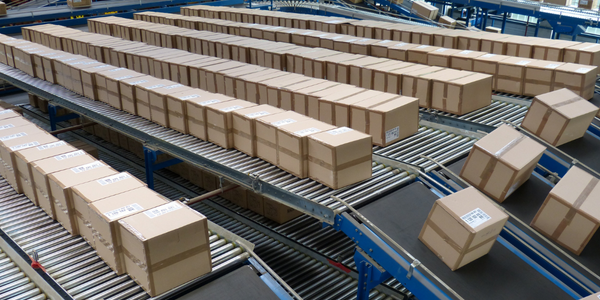Download PDF
Dropps Leverages IoT for a Sustainable and Efficient Supply Chain
Technology Category
- Analytics & Modeling - Machine Learning
- Infrastructure as a Service (IaaS) - Private Cloud
Applicable Industries
- Packaging
- Retail
Applicable Functions
- Logistics & Transportation
- Warehouse & Inventory Management
Use Cases
- Intelligent Packaging
- Supply Chain Visibility
The Challenge
Dropps, a company known for its innovative detergent pods, was facing a significant challenge in aligning its supply chain with its sustainability goals. The company had a complex network of distributors and a third-party fulfillment center that shipped inventory to big-box stores. This model was neither efficient nor cost-effective. Moreover, Dropps was competing for shopper attention and shelf space with other brands in brick-and-mortar retail stores. The company wanted to reduce its carbon footprint and make its supply chain as light and efficient as its detergent pods. To achieve this, Dropps needed a new freight partner that could help optimize routes and control carbon emissions.
About The Customer
Dropps is a company that revolutionized the detergent industry with its invention of the detergent pod. The company was founded by Jonathan Propper, who initially created a low-suds detergent that was effective against dirt but didn't damage fabric. This formula was marketed as Cot’n Wash in the 1980s. Later, Jonathan secured the formula and started Dropps, introducing a simple, dissolvable pod that eliminated the mess, waste, and packaging associated with traditional detergents. Dropps initially had a brick-and-mortar retail strategy but later shifted to a direct-to-consumer model to reduce carbon emissions and align with its sustainability goals.
The Solution
Dropps decided to shift to a direct-to-consumer (DTC) model, which allowed the company to have more control over its supply chain and reduce its carbon emissions. The company established its own warehouse and fulfillment center in the Chicago area, which is centrally located in its supplier network. Dropps partnered with Convoy to manage its full truckload freight network due to their shared vision around supply chain sustainability. Convoy's solutions included pooling truckload capacity, providing shipment insights, and enabling easy tracking and control of carbon emissions. Convoy's batching capabilities allowed carriers to book multiple jobs at the same time, ensuring maximum asset utilization and minimal empty miles. Convoy also pooled its customers’ private fleet capacity, creating a shipper network that could be optimized on a larger scale.
Operational Impact
Quantitative Benefit
Related Case Studies.

Case Study
Improving Production Line Efficiency with Ethernet Micro RTU Controller
Moxa was asked to provide a connectivity solution for one of the world's leading cosmetics companies. This multinational corporation, with retail presence in 130 countries, 23 global braches, and over 66,000 employees, sought to improve the efficiency of their production process by migrating from manual monitoring to an automatic productivity monitoring system. The production line was being monitored by ABB Real-TPI, a factory information system that offers data collection and analysis to improve plant efficiency. Due to software limitations, the customer needed an OPC server and a corresponding I/O solution to collect data from additional sensor devices for the Real-TPI system. The goal is to enable the factory information system to more thoroughly collect data from every corner of the production line. This will improve its ability to measure Overall Equipment Effectiveness (OEE) and translate into increased production efficiencies. System Requirements • Instant status updates while still consuming minimal bandwidth to relieve strain on limited factory networks • Interoperable with ABB Real-TPI • Small form factor appropriate for deployment where space is scarce • Remote software management and configuration to simplify operations

Case Study
How Sirqul’s IoT Platform is Crafting Carrefour’s New In-Store Experiences
Carrefour Taiwan’s goal is to be completely digital by end of 2018. Out-dated manual methods for analysis and assumptions limited Carrefour’s ability to change the customer experience and were void of real-time decision-making capabilities. Rather than relying solely on sales data, assumptions, and disparate systems, Carrefour Taiwan’s CEO led an initiative to find a connected IoT solution that could give the team the ability to make real-time changes and more informed decisions. Prior to implementing, Carrefour struggled to address their conversion rates and did not have the proper insights into the customer decision-making process nor how to make an immediate impact without losing customer confidence.

Case Study
IoT Data Analytics Case Study - Packaging Films Manufacturer
The company manufactures packaging films on made to order or configure to order basis. Every order has a different set of requirements from the product characteristics perspective and hence requires machine’s settings to be adjusted accordingly. If the film quality does not meet the required standards, the degraded quality impacts customer delivery causes customer dissatisfaction and results in lower margins. The biggest challenge was to identify the real root cause and devise a remedy for that.

Case Study
Digital Retail Security Solutions
Sennco wanted to help its retail customers increase sales and profits by developing an innovative alarm system as opposed to conventional connected alarms that are permanently tethered to display products. These traditional security systems were cumbersome and intrusive to the customer shopping experience. Additionally, they provided no useful data or analytics.

Case Study
Zenon the Ideal Basis for An Ergonomic HMI
KHS develops and produces machines and equipment for filling and packaging in the drinks industry. Because drinks manufacturing, filling and packaging consist of a number of highly complex processes, the user-friendly and intuitive operation of equipment is increasingly gaining in significance. In order to design these processes as simple as possible for the user, KHS decided to introduce a uniform, transparent and standardized solution to the company. The HMI interface should meet the requirement for people with different qualifications and enable them to work on a standard platform.






